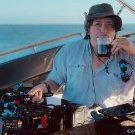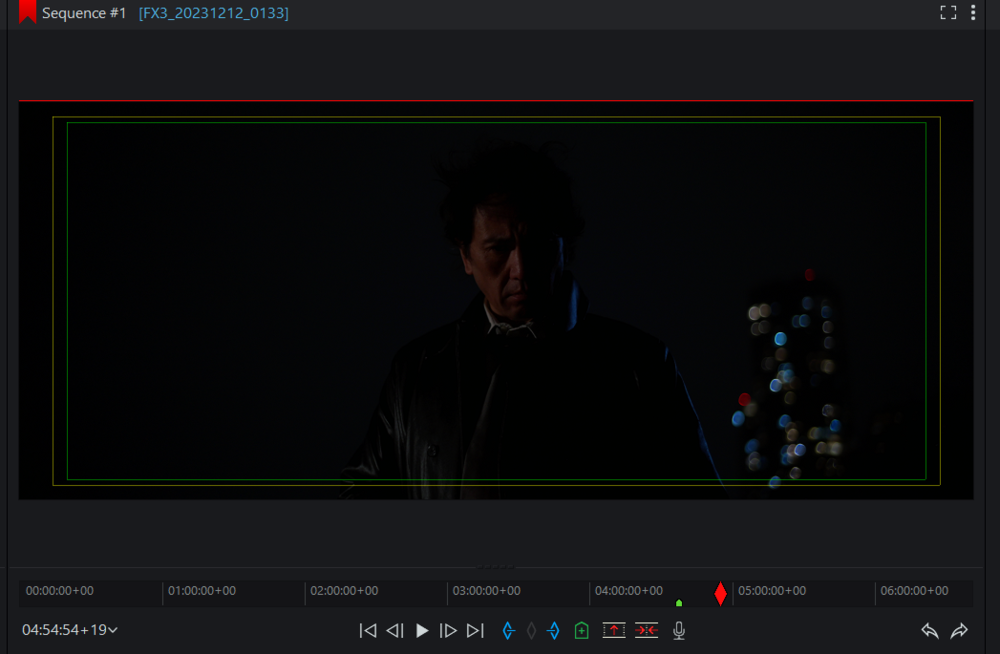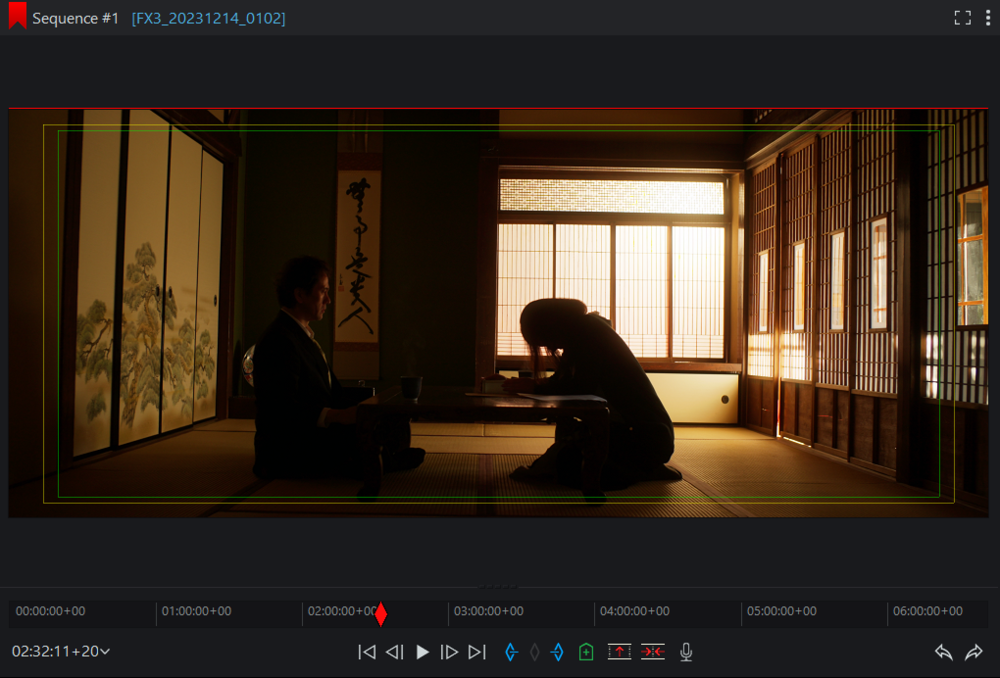-
Posts
7,708 -
Joined
-
Last visited
Everything posted by Adrian Sierkowski
-
I shall do my best. At present was slated to start in April so we'll see what happens I never believe anything until the checks clear.
-
Good evening everyone and to my friends in LA I hope you all are surviving the deluge and the fires. If I can do anything to help any of you out here please let me know. It seems I may be embarking on a rather insane project this coming April, filming a feature film on a 5008-s camera. Now as much as I am sure that I can handle the film side of the film I'm curious if anybody has any solutions for the following problems: Is there any way to adapt the camera to take V mout or gold mount or even NPF type batteries? I'm concerned with the age of the cells we have. As for base plates anybody happen to have a good base plate to adapt it to 15 mm rods? I may not need them but it might be nice to throw a matte box on and perhaps a wireless follow focus. I assume I could just use the tripod mount and any standard base plate but if somebody has a specialized solution I would love to hear it. On camera testing I had some issues with torn perfs, possibly because of old film but I'm curious if anybody has a way to check the gate on the camera that doesn't reset the film counter. I would love a way to make sure we actually got the shot that we think we got. Also any other tips and tricks would be amazing. As of right now I'm thinking of using mostly 200t for the run of show both for economic reasons and because I feel that at 200 I can correct to get acceptable day exterior and light enough to get fun enough noir-esque night scenes. Any help would be much deeply appreciated.
-
Whenever you had multiple HMIs on set I'd often meter them and use +/- green to get them all to match (HMI changes color as the bulb ages). Would also use it when i'm in an all florescent lit area (think supermarket) when you cant change out all the globes, you'd get the correction filter, throw it on the camera and then gel your film lights to match the overheads. I don't really trust a monitor on set in what is often questionable viewing circumstances for color accuracy, when you need it to match, you still want to meter (light or color to be honest). Before, fine-tuning was done with gels and camera filters as well as at the lab/telecine. You'd often shoot color charts and grey cards so the colorist would adjust to that (and not the rest of the scene-- for example if you want things blue you can throw CTO on the key for your color chart, they will cool it down to neutral at the lab, and boom, the rest of your scene is cooler.
-

Put up Streetlights in Shot
Adrian Sierkowski replied to Roman Neugebauer's topic in Lighting for Film & Video
Something like a Redhead or a Blonde or a 1K Nook is what I usually will reach for, if power is not an issue and you're running distro. On the LED side it would depend on how you can get it up there, but ideally you'd want something with an internal ballast, maybe a Vortex 4 with the dome diffusion -
My pleasure and any time
-
It wouldn't matter really. The log isn't broadcast it's just extra room to correct to 709 or 2020 in post. It's no different than going from neg to print stock which also will loose some information. The 16 rule is just to get you an acceptable final viewing image. It doesn't matter if your log or rec, that will only effect how much information you are recording in you highlights and shadows, but my middle grey, which is what the rule and even a light meter is exposing for, will still be middle grey.
-

What’s the best advice you’ve received?
Adrian Sierkowski replied to Ryan Ivy's topic in General Discussion
I would say that in real life is better than online for schooling. But I don't know the programs at all. I do know there might be some shooting up in Oregon next month that maybe you can swing onto as a pa. Don't really have specifics but a grip mentioned it to me in passing. -

What’s the best advice you’ve received?
Adrian Sierkowski replied to Ryan Ivy's topic in General Discussion
If you're a student then network with other students. Work as much as you can with them on as many projects as possible. Keep an eye on Craigslist for things that come up, staffmeup as well. Go to things like cinegear and network.. Reach out to the unions just so they know you exist. Get coffee with people.. Carry a lighter on set. Go to film fest, and screenings when you can. Check out Facebook groups that might interest you. Partner up with directors who will finish and stand with their work. If you're extra ballsy listen in to cafe conversations and join if ever appropriate. Most importantly keep at it and keep your mental health, well healthy; it's rough but worth it. I literally have no idea how I got to where I am and even though it's not glamorous and I've done nothing if note, it usually pays the bills. -
It's all just math. Since most digital doesn't go down to 50iso you'd just have to math it to whatever you're iso is. For example, an. Alexa at 400 iso would be a 3 stop difference. So you could throw an ND.9 in and be at f16 or shoot at a t32 (which I haven't ever seen on a cine lens). This is of course assuming you are keeping your shutter speed at 1/50th. Of course with most digital cameras you have a monitor and false colors.
-

Laowa Proteus: De-tuning lens to add character?
Adrian Sierkowski replied to omar robles's topic in Lenses & Lens Accessories
That tuner is certainly something I would want to rent and play around with. I'm looking forward to it getting more out into the market. As for the original question; my biggest concern would be re-tuning the lens if needed! Honestly, for the price to de-tune you might as well rent something else and if the lenses aren't rocking with what you like, maybe a better idea to sell and buy up some that are. Lenses are nice in that they really don't seem to loose to much value despite how old they are (and in fact the older ones seem to be worth more). -
I just bought a 6KFF "Cinema" for a Doc I fly out to next Monday, and to be honest, I would rather it be the new Pyxis camera. The addition of SDI is great and has been much overdue, as has the TC in port. The Dual CF-Express as well is a vital feature if you are doing any kind of interview or filming which can't be stopped as easily (the idea of using USB to a external drive is a failure point that I'm glad I can avoid with cards). The ability to have a VF (even if it costs 1/2 as much as the body!) is also amazing. I'm also betting we will see 3rd party options for VF using USB-C in time. I think it's a great upgrade. I would have prefered an interchangeable mount, but I guess with L Mount that doesn't really matter. I think the screen on both the new Ursa and the Pixi camera, as I'm calling it, is a little silly-- I would have preferred something more akin to what you get on an Alexa with quick access to settings vs a video display. I do hope there is a LCD lock feature so you don't fat finger or fat face it. As for frame rates, Rarely do I have a personal need for higher than 60, to be honest, mostly everything I shoot is at 24 or 23.97. I think it's a great new upgrade, even if I'm a little annoyed that it rendered my just purchased 6kFF... well basically worthless. That said I'll be picking one up and I'm thrilled at least that most of the accessories I got for the 6KFF will transfer over to the Pixi camera-- Minus the cage and Vmount/GoldMount stuff I got. Apparently their new sensor stuff is in the 12K, which makes sense. I don't think I've ever been wont for more dynamic range out of a camera in ages. If anything when I'm on something like the new Alexa 35 I'm personally a little overwhelmed with the 17 stops and I don't always like the notion that exposure choices I make on set can be so easily.... undone, in post.
-
Kino used to make a ring light, the kamino, I think? It's been awhile but that was a popular little thing in the 90s. Kino Flo Kamio 6E Fluorescent Ring Light System - consists of: 6E Ringlight, Cable, Mounts, 12V On-Camera Ballast, Case - ENG - NO Tubes - 20 Total Watts (12V DC) https://www.bhphotovideo.com/c/product/578057-REG/Kino_Flo_Kamio_6E_Ring.html
-
As for it not being in post, my main argument would be that of control and intent. Often I am not in the room when they are doing coloring, for a myriad of reasons, so being able to get as close to the final look you intend on the day is rather important. Not on Arri, but I did a series of videos with a director in Canon LOG, and the final edit, put out.... was still in LOG! These types of things happen, often because those in post just get used to looking at the image as is, and sometimes make choices based upon that. This said, I'd rather give them an as is as close as possible to what we wanted it to look like. As for the black arts that go into Arri image processing, perhaps it's nice to still have some magic hidden from our minds (and besides they'll probably never tell us what the parameters are. Perhaps we should take to calling Arri Textures the "KFC" pack, for the secret herbs and spices.)
-

Over and Underexposure and what's acceptable.
Adrian Sierkowski replied to Zack Mahar's topic in Lighting for Film & Video
-

Lighting Day Interiors
Adrian Sierkowski replied to Josue Corredor's topic in Lighting for Film & Video
My pleasure. If you're interested, here's a simple day int set up with just 2 lights. Natural sunlight on the large paper windows camera right, then a totally naked 600X for the hot spot in the background. On the close ups, just a 300x with a Litedome 150 played right off of camera at I think something like 10~15% FX3, Base 800/ Cine EI 500, and something like a 2 or 2.8 with 1/8 bpm. I think white balance was around 6500k, but i don't really remember. This also really isn't the right LUT for it, but it's all I had to get it out of SLOG since I don't have studio resolve. This is through lightworks which somehow plays back XAVC and with whatever Venice LUT they had built in the free version of lightworks -
Hey Robin. Sadly just saw this. Given the crazy schedule we have for shooting and a rather over ambitious shot list I don't know if I will have any time this week. But if that changes I'll certainly look you up. Hope your shoots are going well. Was told over at capsule rentals that you're an "o g" here in Tokyo.
-

Lighting Day Interiors
Adrian Sierkowski replied to Josue Corredor's topic in Lighting for Film & Video
Really depends on the interior and the intent. I generally like to have soft lighting somehow and then will often want to add some hard light slashes in the background often with a jolekos type thing. These days I've gotten lazy and lucky enough to be able to do a lot with 1200ds, specifically so I can easily dim them, but if I'm working with the right budget and manpower I'll start opting for 4k/6k/9k hmis and scissor lifts ( if possible). One of my east coast tricks is I'll often want to add a 2L or something similar right above the window to push soft light further into the interior from the same direction as whatever light happens to me there. Another trick that I sometimes like and sometimes hate is CLRS with something like a joker 1600 or a m40 from the ground into them for a hard kick but also throwing a 8x8 or 12x12 UB behind to give some softness as well. Really all comes down to the reality of the location and budget you're working with. -

Over and Underexposure and what's acceptable.
Adrian Sierkowski replied to Zack Mahar's topic in Lighting for Film & Video
I’m personally of the mind to leave as little to the grade as possible. Often you won’t be in that room, and even if you are, you are saving them time. I work by the notion of “do i care about _____?” If I do, I make sure it has the right amount of detail, if I don’t, I don’t. I also look at the image to see if something, generally a highlight is distracting or not. If it is, I remedy it, if not, then that’s ok. Some things are incredibly bright, some dark. That said, for windows, I generally try to hold some detail in the outside and will often ask for sheers to be put over a window in the frame. If possible I’ll also try to ND or net it. -
Hey all Looks like I'll be over in Tokyo for a few days (tomorrow through the 17th) for a bit of shooting, and possibly some down time. I haven't really gotten a schedule as of yet, but if anyone on the forum is around and wants to grab a coffee and hear my god-awful attempts to ask "if you undertand" english in Japanese, don't hesitate to let me know. I'll be around Nakano City as far as I know and close to the train there as well. In any case, I hope all are doing alright as we head into the holiday season. -Adrian
-
Travel friendly gets kinda hard since you'll generally want a few heads. I would certainly go LED and bi-color since you can adapt it to many situations. Aperture is alright-- it can break, but is pretty durable. I have seen some green shift in their "x" COB lights with use (generally in tungsten). The real problem becomes budget. In an Ideal world, and I know a few DoP friends who travel with something similar to this, I would have a Hudson Spider kit, a 600X, and a Lite-mat 4, perhaps a 2L instead. And that would be a goo base, but it's essentially 3x your budget. That said, the slightly cheaper option might be: FX22 or the upcoming Godox 4x4 light. The FX/FC (I have a 21FX) is a little flimsy, but small and packable. Also relatively affordable. The battery power option has been helpful in a very under-budget tv series I'm day playing on and it has held up reasonably well so far. The Godox (F600bi I think?) I haven't yet used but is on par with the apurture stuff. It's probably a better bet since it's a larger source, and can be a quick and dirty key. I would perhaps get that (1700) and a FX21 (about 400) and you're at around 2000USD. This doesn't leave much for a brighter and harder source which you'll probable want, but maybe you can find a used 600x? New it's about 2K so you're over by $1000. A Fora 500B Might be an alternative, but I haven't personally used it. You can find them for around 1500 ish, which is still over and it isn't as bright, but will do in a pinch. TLDR Best I can think of Godox 600Bi 4x4 Panel (key) Amaram FX21 (accent/hair) Forza 500B, you're BFL with dome and fresnel accessories. You're still over $3000 when you add it all up, and have at least 2 cases to travel with plus stands and such, but it's what I would carry for running around If I wasn't trying to spend 3x as much for a Spider and some litemats.
-
Yeah for something like that you work with what you have, and adjust what you can to get it as good as possible. Sometimes you really can't do anything. I once shot in a market where every light was green and all we could do was throw a flb on the camera, and shoot. When you are in that type of situation , production design, shot and lense selection, and wardrobe can really save you. Same with blocking. For example --.ugly wall over there, ok throw in some background in wardrobe that helps hide it!







